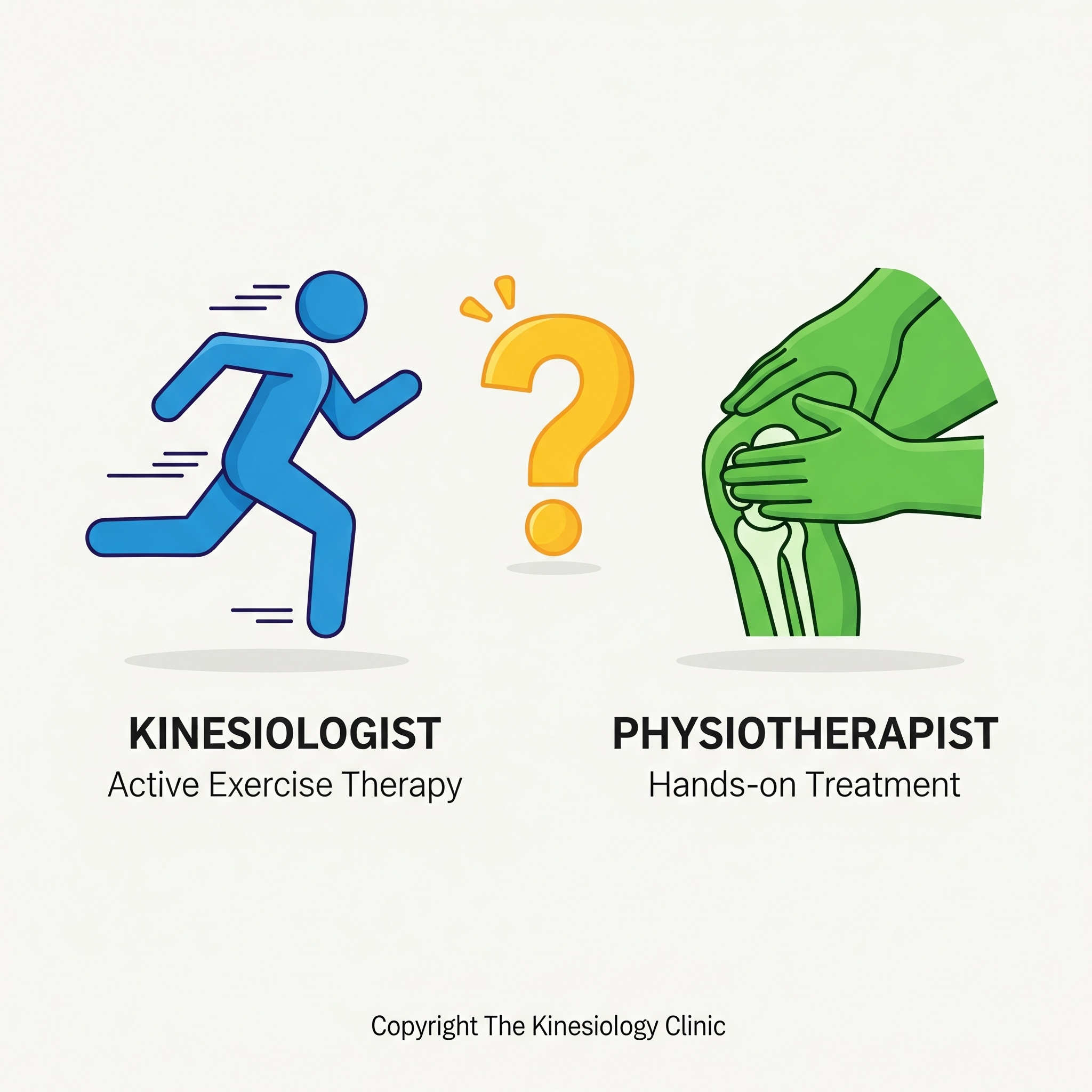Kinesiologist vs. Physiotherapist in Surrey: Which One Do I Need?
By Gurminder, Registered Kinesiologist

If you're dealing with pain or an injury in Surrey, you've probably heard the terms "kinesiologist" and "physiotherapist" used. But it's not always clear what the difference is, or more importantly, which one is the right choice for you. As a kinesiologist in Surrey, this is a question I answer all the time.
While both professions are dedicated to helping you move and feel better, we have different areas of focus and use different primary tools. Let's break it down.
What is a Kinesiologist? The Movement Specialist
Think of a kinesiologist as a human movement specialist. My primary tool is active, exercise-based therapy. I use my deep understanding of anatomy, physiology, and biomechanics to create personalized exercise programs that help you achieve your goals. The focus is on empowering you through education and movement.
You should see a kinesiologist for:
- ICBC Active Rehab: This is our specialty. After a car accident, a kinesiologist guides you through a structured exercise program to rebuild strength, restore function, and help you return to your daily life.
- Chronic Pain Management: We design gentle, progressive exercise plans to manage conditions like arthritis or fibromyalgia, helping to improve function without causing flare-ups.
- Personal Training & Fitness: If you're new to fitness or have a history of injuries, a kinesiologist provides expert guidance to ensure you're exercising safely and effectively.
- Injury Prevention: We can assess your movement patterns to identify and correct imbalances before they lead to injury.
What is a Physiotherapist? The Diagnostic & Manual Expert
A physiotherapist is a healthcare professional who is an expert in diagnosing injuries and providing initial treatment. Their primary tools often include manual therapy (hands-on techniques like massage and joint mobilization) and modalities like ultrasound or acupuncture to manage acute pain and inflammation.
You should see a physiotherapist for:
- Acute Injuries: If you've just sprained an ankle, strained a muscle, or have a new, sharp pain, a physiotherapist is the right person to see for an initial diagnosis and treatment plan.
- Post-Surgical Rehabilitation: They play a crucial role in the early stages of recovery after surgery, helping to manage pain, reduce swelling, and restore basic movement.
- Initial Injury Assessment: They are highly skilled at identifying the specific nature of an injury.
A Simple Comparison
Here’s a quick way to think about the key differences:
| Feature | Kinesiologist | Physiotherapist |
|---|---|---|
| Primary Tool | Exercise, Movement & Education | Diagnosis & Manual (Hands-On) Therapy |
| Focus | Active, long-term recovery and functional improvement | Acute injury management and initial diagnosis |
| Best For | ICBC Active Rehab, chronic pain, fitness, injury prevention | New sprains/strains, post-surgery, initial assessment |
Do They Work Together?
Absolutely! Kinesiologists and physiotherapists often work as a team. It's very common for a client to see a physiotherapist for the initial phase of an injury and then be referred to a kinesiologist to continue with the active, exercise-based phase of their rehabilitation. We are two sides of the same coin, both working to get you back to your best.
The Takeaway
Choosing the right professional depends on your specific needs. If you need a diagnosis for a new injury or hands-on treatment, a physiotherapist is a great starting point. If you're ready to take an active role in your recovery, need guidance with an exercise program for ICBC rehab, or want to improve your overall fitness and movement, then a kinesiologist is the perfect fit.